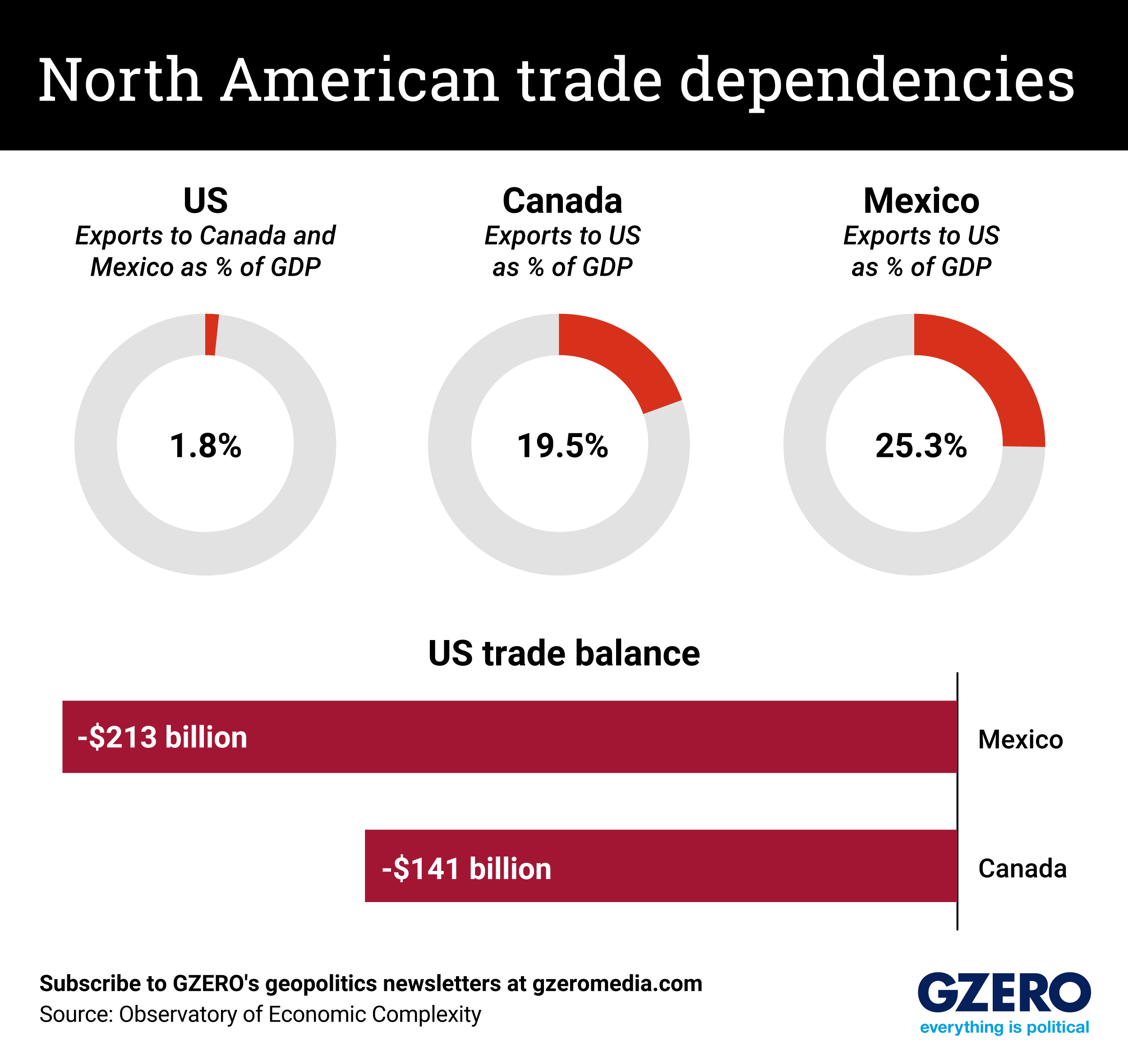March 06, 2025
This week, Donald Trump fired the opening shots in a new North American trade war, slapping 25% tariffs on Mexico and Canada, America’s top two trade partners.
Both countries responded in kind, but by the numbers at least, the US has significantly more leverage in this showdown. That’s because the economies of Canada and Mexico are vastly more dependent on exports to the US than the US is on exports in the other direction.
Here is a look at that dependency, measured by looking at how much of Mexican and Canadian GDP comes directly from exports to the US, and vice versa.
The caveat: These are national-level numbers. At the state level, the picture changes a bit, with the economies of some individual US states way more dependent on Mexican or Canadian trade than the country as a whole is.
North Dakota, for example, derives about 10% of its GDP from exports to Canada alone. Michigan’s exports to Mexico and Canada combined account for 6% of its economy. New Mexico sends 70% of its exports to “old” Mexico.
We’ll look at that in more detail in an upcoming Graphic Truth. For now, here’s the (lopsided) picture at the national level.
More For You
America’s new National Security Strategy confirms what Europeans have feared for months: Washington now sees a strong, unified European Union as a problem to be solved, not an ally to be supported.
Most Popular
Sponsored posts
The power of sports
What's Good Wednesdays
What’s Good Wednesdays™, December 10, 2025
Walmart sponsored posts
Walmart's $350 billion commitment to American jobs
In this episode of Tools and Weapons, Microsoft Vice Chair and President Brad Smith sits down with Ed Policy, President and CEO of the Green Bay Packers, to discuss how purpose-driven leadership and innovation are shaping the future of one of the world’s most iconic sports franchises. Ed shares how technology and community-focused initiatives, from Titletown Tech to health and safety innovations on the field, are transforming not just the game of football, but the economy and culture of Green Bay itself. He explains how combining strategic vision with investment in local startups is keeping talent in the Midwest and creating opportunities that extend far beyond Lambeau Field.
Subscribe and find new episodes monthly, wherever you listen to podcasts.
Members of security forces stand guard outside a polliong station, a week late in a special election, after the local governing party kept voting closed on election day, amid accusations of sabotage and fraud, in a presidential race still too close to call as counting continues, in San Antonio de Flores, Honduras, December 7, 2025.
REUTERS/Leonel Estrada
More than a week after Hondurans cast their ballots in a presidential election, the country is still stuck in a potentially-dangerous post-election fog.
© 2025 GZERO Media. All Rights Reserved | A Eurasia Group media company.
